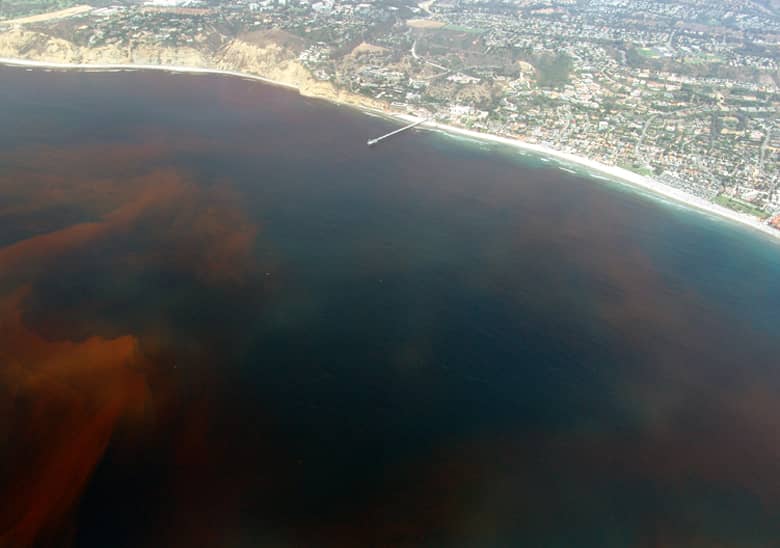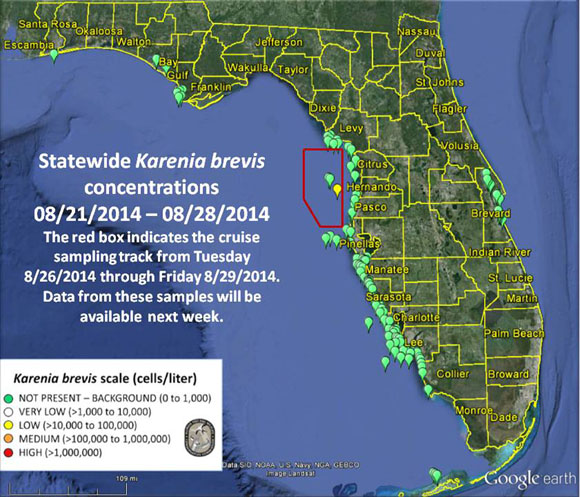Massive Red Tide in Florida Causing Offshore Fish Kill
OutdoorHub Reporters 08.29.14

The Florida Fish and Wildlife Conservation Commission (FWC) is keeping tabs on a large bloom of Karenia brevis—the organism that causes red tide—in the Gulf of Mexico, where it has lingered for about a month. The recent event is decribed by experts as Florida’s largest bloom in over a decade, and it could wash closer to shore in the coming weeks. The FWC has received numerous reports of a significant fish kill 10 to 15 miles off Dixie, Pasco, and Pinellas counties, including signs of respiratory irritation in fish.
“It could have large impacts if it were to move inshore,” FWC spokesperson Brandon Basino told Reuters earlier this month. “It has been killing a lot of marine species, especially fish, as it waits offshore.”
Red tide is the common name for a naturally-occuring fungal bloom usually found in coastal areas. Its name derives from the color of the water when the bloom is present, which can vary from purple to pink due to high concentrations of algae.
“There a lot of misconceptions about red tide,” Vince Lovko, manager of Mote Marine Laboratory’s Phytoplankton Ecology program, told the Tampa Bay Times. “Perhaps the greatest one is that it is always red.”
One thing that is true however, is that red tide can be very dangerous to marine life. Florida’s last major brush with the harmful bloom occurred in 2005, when a devastating red tide caused thousands of fish to wash ashore, along with sea turtles, marine birds, and mammals such as the manatee.
“I have seen analogies that equate red tide with a forest fire,” said Kellie Dixon, Mote’s ocean technology program manager. “There is an ecosystem reset.”
Red tide kills fish because the algae in it produce toxic chemicals that make it difficult to breathe. It can also affect humans as well, although not quite to the same extent. Florida officials say it is still safe to swim and fish near the affected areas, although it is advisable to move elsewhere if you see large quantities of dead fish.

The current case of red tide was first sighted early in August and is estimated to be 90 miles long and 60 miles wide. Anglers near the affected areas tell The Gainesville Sun that fishing does not seem to be affected, at least not yet. Experts say that the bloom is expected to move southeast, but trying to estimate where the red tide will end up is hard. FWC officials say that no fish kill has been reported along the Florida coast.

